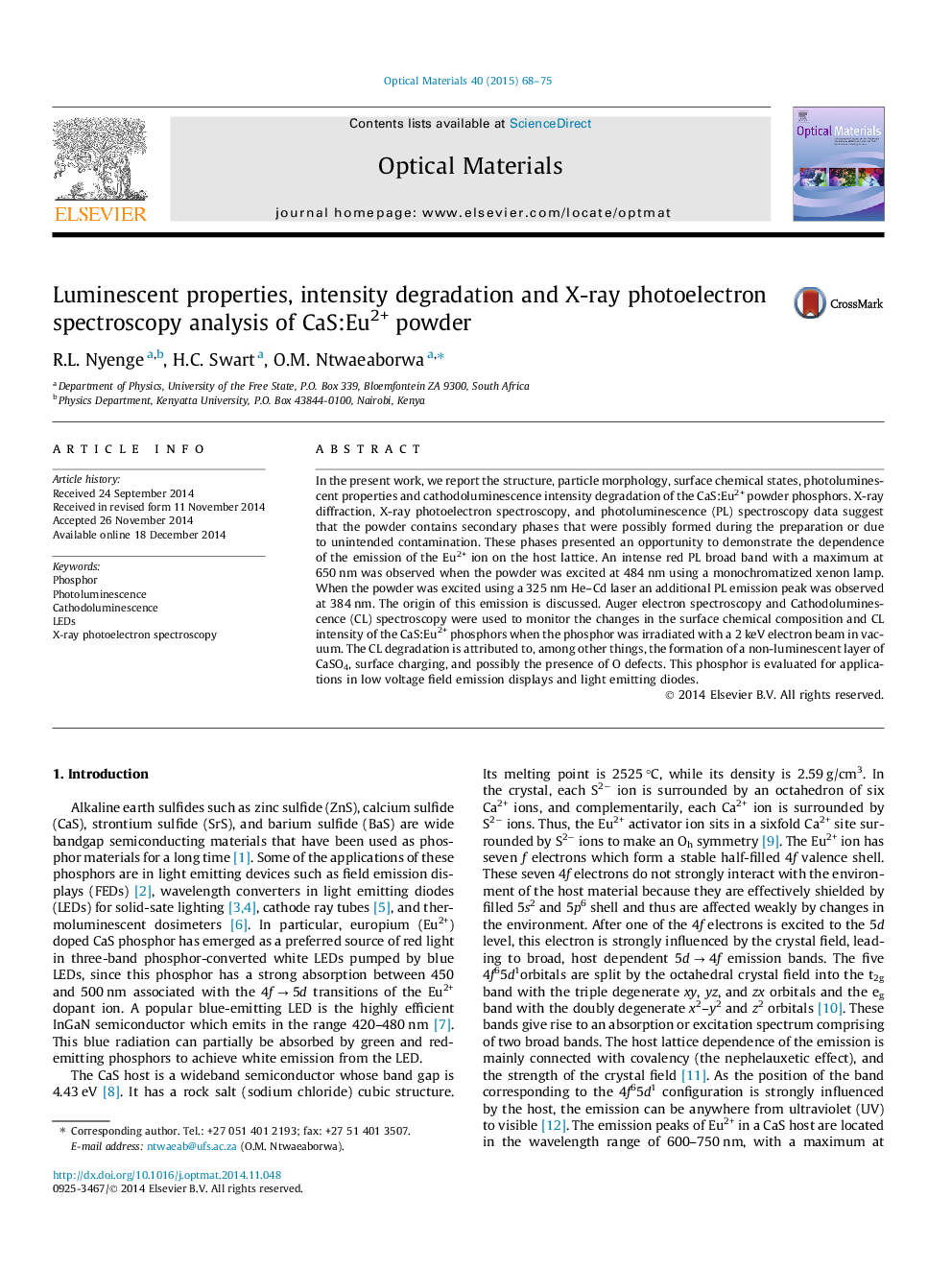| Article ID | Journal | Published Year | Pages | File Type |
|---|---|---|---|---|
| 1493870 | Optical Materials | 2015 | 8 Pages |
•The utility of Cas:Eu as a potential red phosphor in a tricolor LED system.•Determination of sulfate/sulfide secondary phases by X-ray photoelectron spectroscopy.•The occurrence of unwanted photoluminescence emission at 384 nm, assigned to Eu2+ emission in CaSO4.•Cathodoluminescence intensity degradation by electron stimulated surface chemical reaction model.
In the present work, we report the structure, particle morphology, surface chemical states, photoluminescent properties and cathodoluminescence intensity degradation of the CaS:Eu2+ powder phosphors. X-ray diffraction, X-ray photoelectron spectroscopy, and photoluminescence (PL) spectroscopy data suggest that the powder contains secondary phases that were possibly formed during the preparation or due to unintended contamination. These phases presented an opportunity to demonstrate the dependence of the emission of the Eu2+ ion on the host lattice. An intense red PL broad band with a maximum at 650 nm was observed when the powder was excited at 484 nm using a monochromatized xenon lamp. When the powder was excited using a 325 nm He–Cd laser an additional PL emission peak was observed at 384 nm. The origin of this emission is discussed. Auger electron spectroscopy and Cathodoluminescence (CL) spectroscopy were used to monitor the changes in the surface chemical composition and CL intensity of the CaS:Eu2+ phosphors when the phosphor was irradiated with a 2 keV electron beam in vacuum. The CL degradation is attributed to, among other things, the formation of a non-luminescent layer of CaSO4, surface charging, and possibly the presence of O defects. This phosphor is evaluated for applications in low voltage field emission displays and light emitting diodes.
